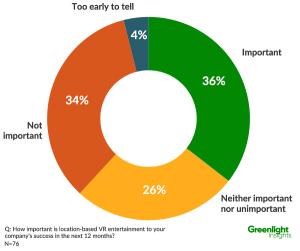I have been ranting about Location Based VR Experiences for the last few years and it seems as if the business model is starting to gain traction. In a Road to VR article written by Greenlight Insights analyst Colin McMahon, VR Developers Prioritizing VR Arcades for Content Distribution, the ground work for such business is explained. VR Arcades are opening around the world and it would seem the trend is only building. Location based VR is extraordinarily popular in China where the cost entry point for getting into VR is out or range for most consumers. VR Arcades offer an excellent way for experiencing VR without having to pay the enormous start-up costs.
In many ways, the LBVRE industry has done a much better job of fulfilling the early potential and expectations of what virtual reality as a technology can offer, than home systems. With no restrictions on hardware customisation and the freedom to eschew out-of-the box tracking technologies for current generation VR headsets, startups like The Void and VRCade have shown what pure virtual reality attractions can offer right now. Companies such as IMAX VR are already distributing content created by other developers.
McMahon says, “The emergence of the LBVRE sector will benefit VR-first studios, as it is another premium channel to distribute their experiences, much like Hollywood studios benefit from movie theaters.” He then goes on to explain the intentions of VR development company Survios to distribute their new title Sprint Vector as an ideal LBVRE content.
Utilizing LBVRE for distribution is on many developers mind’s as well. The graph shown below demonstrates a 36{76c5cb8798b4dc9652375d1c19c86d53c1d1411f4e030dd406aa284e63c21817} concern for the availability for VR distribution channels.

It’s obviously too early to identify a specific trends but there does seems to be a building interest.
Based on Greenlight Insights March 2017 forecast, LBVRE is expected to grow in revenues to $1.2 billion in 2021, propelled by commercial and consumer spending on VR technology, content and services at cinemas, arcades, and other venue attractions.
